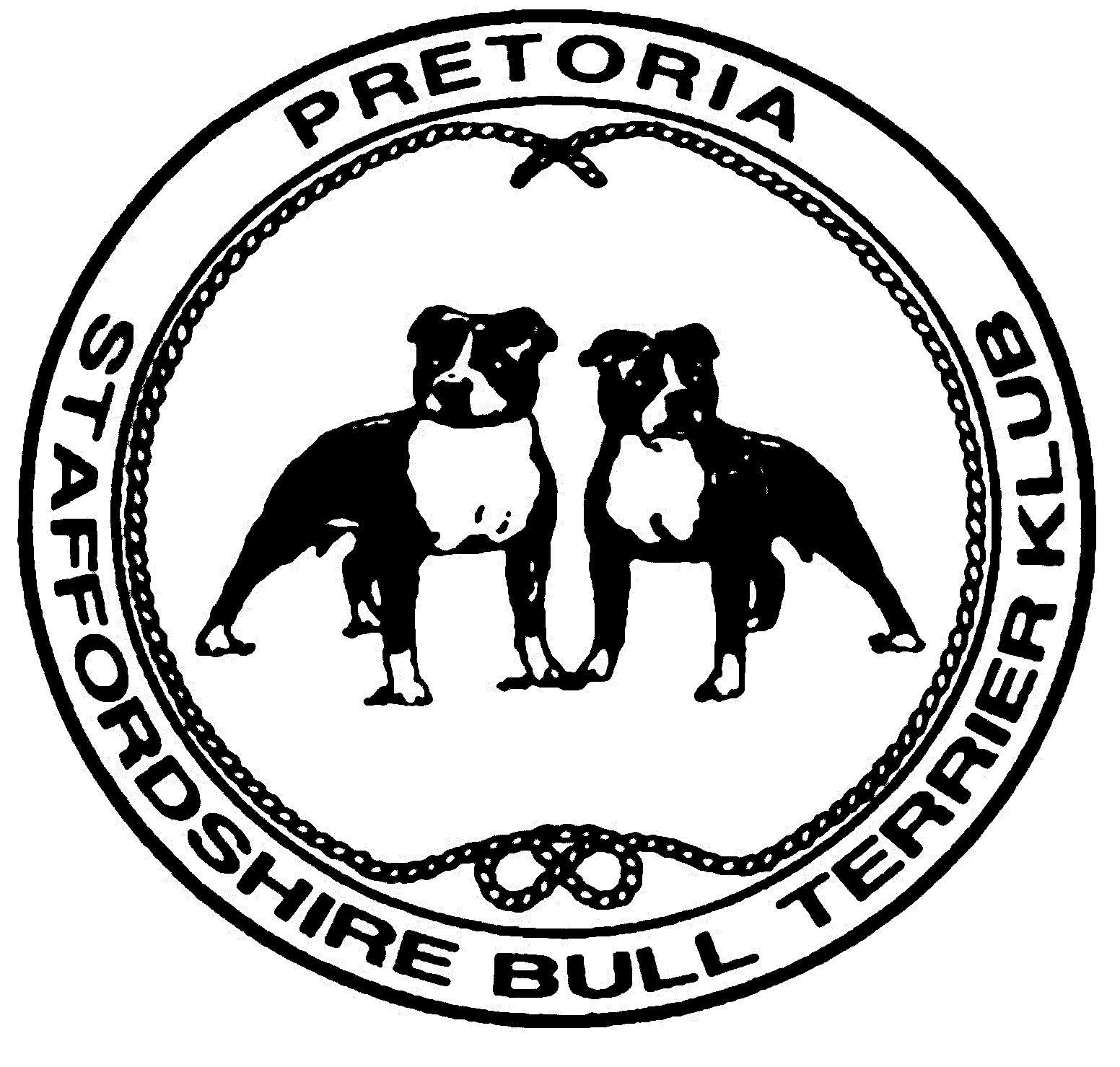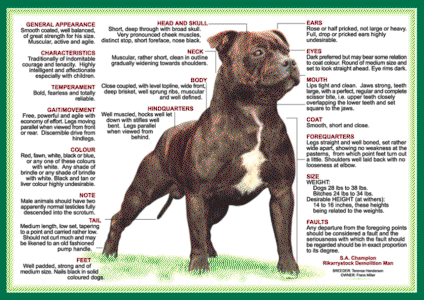STAFFORDSHIRE
BULL TERRIER OFFICIAL BREED STANDARD
GENERAL APPEARANCE
Smooth-coated, well balanced, of
great strength for his size. Muscular, active and
agile.
CHARACTERISTICS
Traditionally of indomitable
courage and tenacity. Highly intelligent and
affectionate especially with children.
TEMPERAMENT
Bold, fearless and totally
reliable.
HEAD & SKULL
Short, deep though with broad
skull. Very pronounced cheek muscles, distinct stop,
short foreface, nose black.
EYES
Dark preferred but may bear some
relation to coat colour. Round, of medium size, and
set to look straightahead. Eye rims dark.
EARS
Rose or half pricked, not large
or heavy. Full, drop or pricked ears highly
undesirable.
MOUTH
Lips tight and clean. Jaws
strong, teeth large, with a perfect, regular and
complete scissor bite, i.e. upper teeth closely
overlapping lower teeth and set square to the jaws.
NECK
Muscular, rather short, clean in
outline gradually widening towards shoulders.
FOREQUARTERS
Legs straight and well boned, set
rather wide apart, showing no weakness at the
pasterns, from which point feet turn out a little.
Shoulders well laid back with no looseness at elbow.
BODY
Close-coupled, with level top
line, wide front, deep brisket, well sprung ribs;
muscular and well defined.
HINDQUARTERS
Well muscled, hocks well let down
with stifles well bent. Legs parallel when viewed
from behind.
FEET
Well padded, strong and of medium
size. Nails black in solid coloured dogs.
TAIL
Medium length, low-set, tapering
to a point and carried rather low. Should not curl
much and may be likened to an old-fashioned pump
handle.
GAIT / MOVEMENT
Free, powerful and agile with
economy of effort. Legs moving parallel when viewed
from front or rear.
Discernible drive from hind legs.
COAT
Smooth, short and close.
COLOUR
Red, fawn, white, black or blue,
or any one of these colours with white. Any shade of
brindle or any shade of brindle with white. Black
and tan or liver colour highly undesirable.
SIZE
Desirable height at withers 36 -
41 cms (14 to 16 ins), these heights being related
to the weights.
Weight:
Dogs: 13 - 17 kgs (28 - 38
lbs);
Bitches: 11 - 15.4 kgs (24
- 34 lbs).
FAULTS
Any departure from the foregoing
points should be considered a fault and the
seriousness with which the fault should be
regarded should be in exact proportion to its degree
and its effect on health & welfare of the dog...
NOTE
Male animals should have two
apparently normal testicles fully descended into the
scrotum.

